Here follow some operations that are taking place on board which can be hazardous to personnel or ship:
1. Loading/unloading of cargoes.
2. Mooring operations.
3. Entry into enclosed spaces.
4. Work at height.
5. Engine-room watchkeeping and maintenance.
6. Hot work.
7. Handling of chemicals (included in several operations).
8. Lifting operations, manually and mechanically (involved in several operations).
9. Anti-piracy and stowaway operations (explained in the previous step).
You are now going to learn more about the first six operations on the list and why they are a possible risk for you and your crew. Number 7 and 8 are included in several operations, and number 9 has been explained previously in this course.
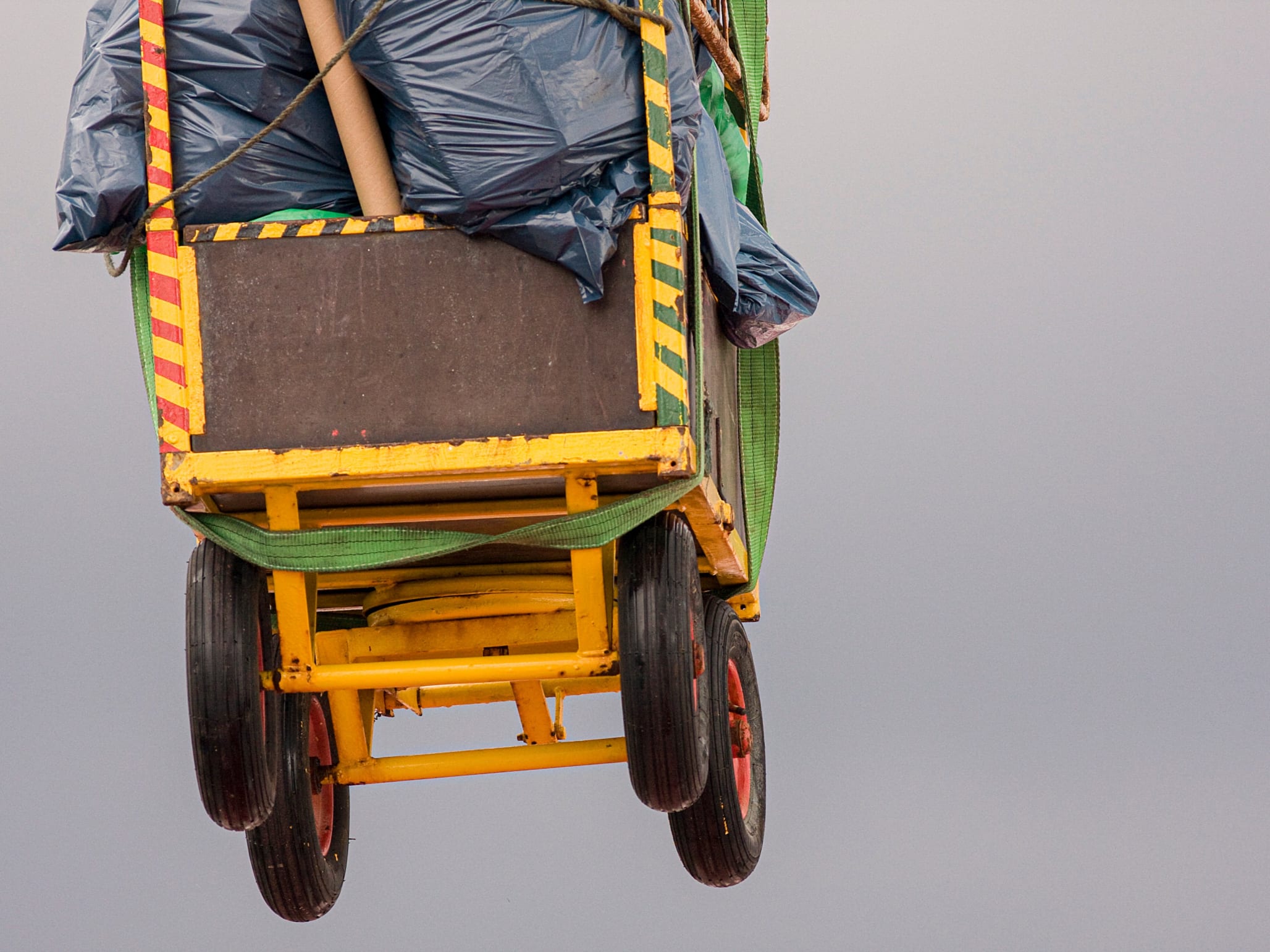
The hazards on these vessels, in the holds and on the jetty alongside are mainly from overhead loads, lifting gear and cargo handling equipment such as trucks and forklifts. Photo: Jörgen Språng
1. Loading and Unloading of Cargoes
There are various types of ships:
- General cargo vessels.
- Bulk carriers.
- Container ships.
- Ro-ro and car carriers.
- Oil- and chemical tankers.
- Gas carriers.
- Offshore vessels.
- Passenger ships.
In general, cargo vessels, bulk carriers, and container ships cargo are lifted on and off the vessel by cranes or derricks. Bulk cargo is poured into the ship’s hold by conveyor belts. The hazards on these vessels, in the holds and on the jetty alongside, are mainly from overhead loads, lifting gear, and cargo handling equipment such as trucks and forklifts. No unauthorized persons should be allowed into the working area, and when walking onboard the ship, all personnel shall use the offshore side of the deck.
Ro-ro ships and car carriers have several decks connected by ramps. Cargo is driven on and off the vessel and up to the various decks via the ramps. The cargo is often driven at high speeds, and any person standing in the way is likely to be run over.
On oil- and chemical tankers and gas carriers, the cargo is in a liquid state and is pumped into and out of the ship through pipelines. The main hazard onboard these ships is from gas, which could be flammable, toxic, or could cause a lack of oxygen. Crew on oil- and chemical tankers and gas carriers must have special knowledge of the hazards involved and working procedures.
Passenger ships may also carry cars or other cargo, and includes ferries.
In addition to deck and engine-room staff on board passenger ships, there may be a large number of cooks, waiters, housekeeping staff, shop and other service assistants, entertainment, medical and religious attendants, etc. This person must have knowledge of crowd control, especially in emergencies.
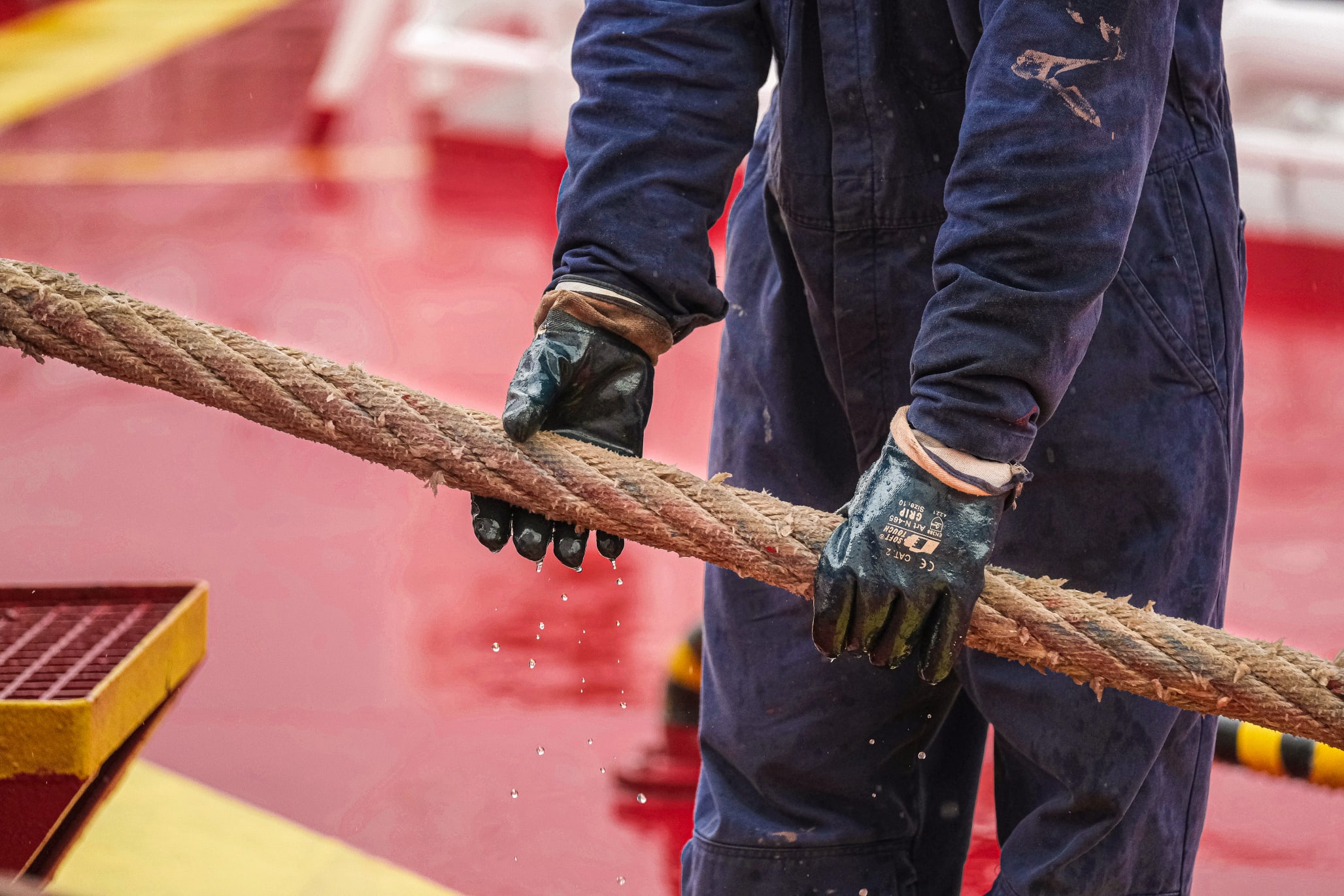
All persons engaged in mooring operations must be extremely careful and aware of the risks and stay well clear of a rope or wire under tension, and never stand in the bight of a rope or wire. Photo: Jörgen Språng
2. Mooring and Unmooring
What is mooring? Mooring is to tie up a ship to a jetty, berth, or pier using a number of lines. The lines used to tie up the ship are known as mooring lines or mooring wires. A ship’s mooring arrangement consists of the following lines or wires.
- Headline – Leading from the forecastle at an angle of approximately 45 deg.
- Breast line – Leading from the forecastle, main deck, or poop deck at an angle of approximately 90 deg.
- Forward spring line – Leading from the forecastle or main deck in an angle opposite to the ship’s heading.
- Aft spring line – Leading from the poop deck or main deck in the same angle as the ship’s heading.
Mooring lines are weighty synthetic lines around 100 mm diameter or more. Wires are around 50 mm in diameter, depending on the size of the ship.
All mooring equipment – ropes, wires, heaving lines, stoppers, shackles, winches, and windlass, etc., – must be checked to be in good order and condition before any operation.
When a ship is brought alongside, it is done by passing one or more lines ashore and heaving on these lines, using the windlass or mooring winches. The ropes and wires are risky to handle and can be extremely dangerous to those in the vicinity, especially when under stress. If any of these ropes or wires part under pressure, they can cause a whiplash than can kill or dismember a person.
All persons engaged in mooring operations must be very cautious and aware of the risks and stay well clear of a rope or wire under tension, and never stand in the bight of a rope or wire. The person heaving the rope on the drum must hold it loosely (without using the thumbs) and be ready to slacken it if it slips under tension. A mooring operation is riskier during:
- Strong winds.
- Heavy seas or swell.
- Rain.
- By the need for speed.
When the ship is moored, the mooring lines must be continuously checked and always maintained taut. Special attention must be paid when:
- Loading or unloading at a high rate.
- There is a large tidal range in the port or strong currents.
- There are strong winds or at berths exposed to the sea.
- Other ships are passing close by, i.e., in rivers and harbor entrances.
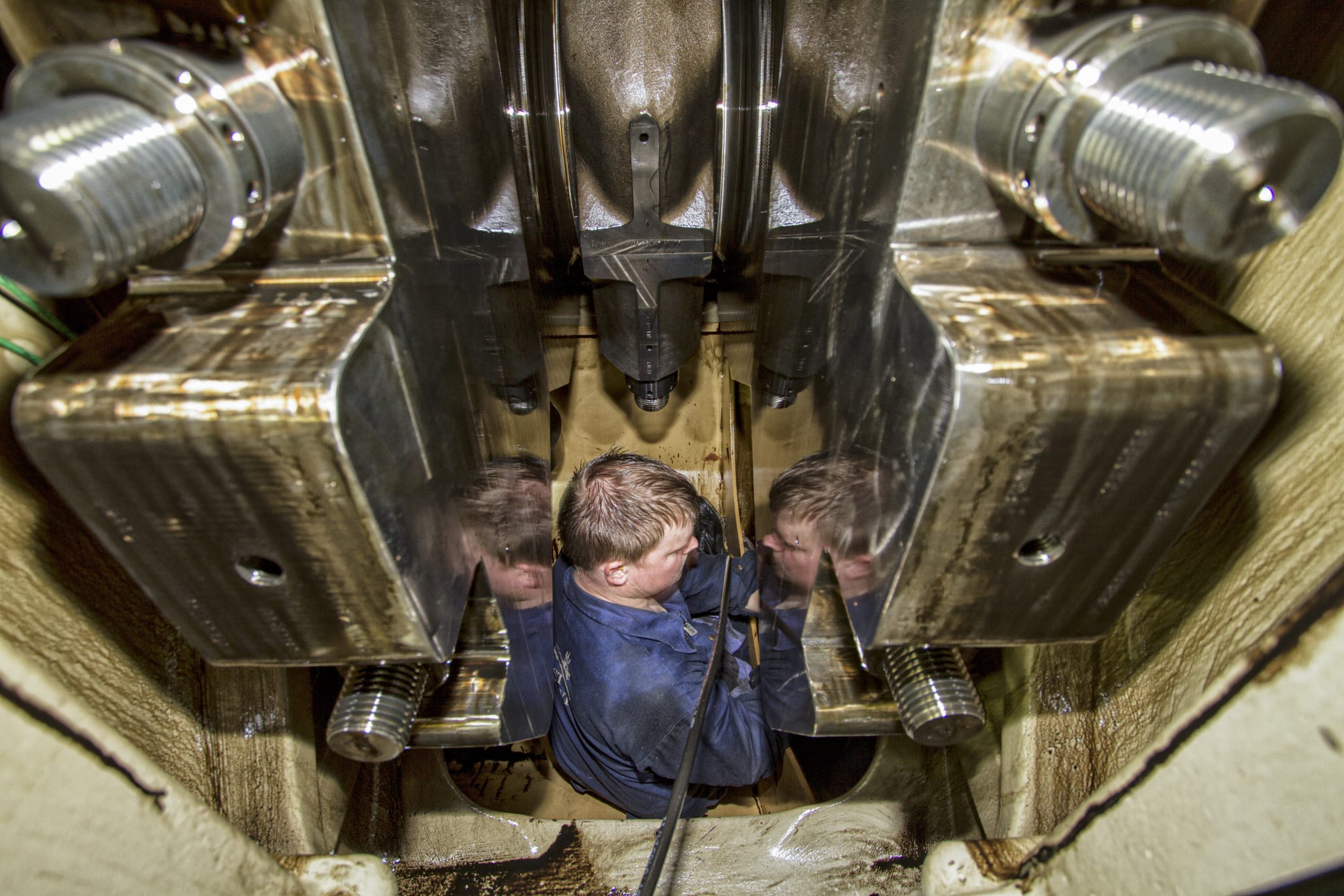
Careless entry, into enclosed spaces, has resulted in accidents, sometimes fatal if the person is overcome by a lack of breathable atmosphere or is injured and not rescued in time. Photo: Jörgen Språng
3. Entry Into Enclosed Spaces
The definition of an enclosed space is a space where the ventilation is not kept running on a round-the-clock basis. An enclosed space could be any of the space below:
- Fore- and after peak tanks.
- Chain lockers.
- Cofferdams.
- Topside tanks.
- Cargo tanks.
- Ballast tanks.
- Bunker tanks.
- Duct keel.
Careless entry, without proper preparations, into enclosed spaces, has resulted in accidents, sometimes fatal if the person is overcome by a lack of breathable atmosphere or is injured and not rescued in time. Entry into enclosed spaces always requires a Permit To Work (PTW). The hazards when entering enclosed spaces divide into physical hazards and atmospheric hazards.
Other gases, such as NO, NO₂, SO₂, CO, benzene, H₂S, etc., can be a toxic hazard. These gases can evolve from cargo, ship’s stores, or ship operation. A toxic hazard is a hazard that is harmful or poisonous to the body. A chemical substance that involves a toxic hazard has a Threshold Limit Value (TLV).
The TLV of a chemical substance is a level at which it is believed a worker can be exposed day after day for a working lifetime without adverse health effects. The TLV is defined as a concentration in air and is measured in ppm for gases and milligrams per cubic meter for particles such as dust, smoke, or mist. At no workplace, toxic gases should be present in concentrations more than their TLVs. The atmosphere in an enclosed space may be oxygen deficient due to several causes, such as:
- Rusting.
- Ingress of inert gas (in inerted tank or leakage across from inerted tank into adjoining enclosed space).
- Paint drying.
- Hydrogen.
- Electrical cleaning fluids.
- Solvents/emulsifiers.
- Refrigerants.
- Burning.
- Flooding with CO₂ to fight a fire.
- Welding and gas cutting without proper ventilation.
- Running an internal combustion engine in a confined space.
- The decay of organic matter, e.g., vegetables, grain, fruits, etc.
To suffer from oxygen deficiency can result in anoxia. The symptoms commence with giddiness, breathlessness, and unconsciousness and progress onto brain damage causing memory loss, mental instability, paralysis, coma, or death. The physical hazards associated with entry into enclosed spaces could cause a person to be physically or even fatally injured. Physical hazards can include:
- Darkness.
- Unsecured ladders.
- Slippery surfaces.
- Obstructions.
- Unguarded openings.
- Unsecured objects left from a previous visit.
- Flooding.
- Getting trapped in accidentally.
When entering an enclosed space, it is vital for the safety of all involved that the following precautions are to be followed. An enclosed space entry permit system must be strictly followed. The space must be thoroughly ventilated and confirmed by testing of the atmosphere. The oxygen level must be sufficient to support life, which is more than 20,9%. There must be insufficient flammable gas for the purpose, and toxic gas must be less than TLV.
When working in an enclosed space, proper protective equipment – overalls, hard hats, safety shoes, etc., as well as approved torchlights, non-sparking tools, etc., must be used. Vigilance and alertness must be exercised, the atmosphere must be monitored, and all precautions observed while the job is ongoing. The crew working in an enclosed space must be cautioned of overconfidence or negligence. When the job is done, protective clothing and the workplace must be cleaned up, and things left neat and tidy.
Any job in an enclosed space always starts and ends with a PTW. When issuing a PTW for an enclosed space, several questions have to be answered to keep control of the job and to make sure that correct preparations have made done and that all applicable procedures are followed. When all questions and atmosphere test results have been answered and entered into the PTW, it must be signed by different persons before it is valid. Those persons could be:
- A person carrying out the job.
- The area responsible (Chief Officer, Chief Engineer, etc.).
- Officer On Watch (OOW).
There are different questions to answer before a PTW can be issued, such as:
- Name of persons entering space?
- Has a risk assessment been carried out?
- What PPE shall be used?
- Is the space ventilated?
- Has the atmosphere been tested, and what is the result?
- What kind of communication shall be used?
- Has the area been roped off?
- Has a toolbox meeting been held?
- Is lock-out/tag-out necessary?
- Are the emergency response procedures known?
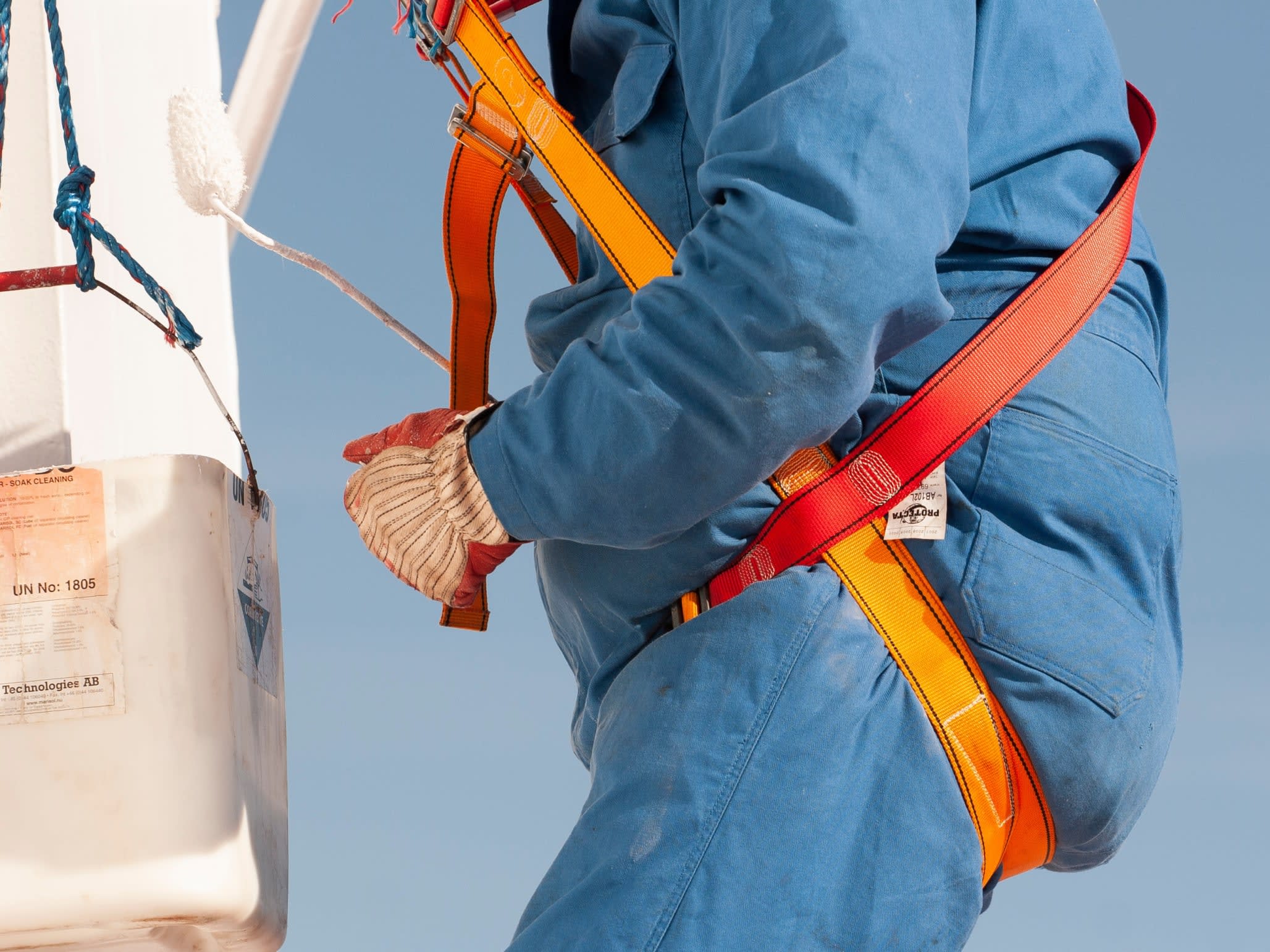
Suitable control measures should be taken to protect those working at height. Photo: Jörgen Språng
4. Work at Height
The definition of work at height is to work at a height above the ground or deck where the primary hazard is falling and consequent injury. It can also be considered as a work aloft if working overside. Work at height can be any of the following jobs:
- Painting bridge front bulkhead, masts, engine room deckhead.
- Cleaning or painting funnel.
- Greasing, maintenance, or repair of radar scanner, crane or derrick blocks, and wires.
- Chipping, painting, cleaning, or inspecting tanks or holds.
- Painting the ship side, the underside of flying bridge wings, etc.
The hazards connected with work at height are:
- Falling from height due to loss of balance, failure of ropes, etc.
- The injury was due to falling material or equipment.
- Burns due to contact with hot surfaces such as the funnel or steam from the whistle.
- Emissions of carbon dioxide or toxic gases from the funnel due to combustion, incineration, soot blowing, etc.
- Exposure to wind and cold.
- Electric and radiation hazards due to proximity to radar scanners or radio aerials.
Before beginning any work aloft, prior notice must be given to the responsible person concerned, e.g.:
- Duty engineer when working in the vicinity of the funnel, to refrain from soot blowing or incineration or the shut-off steam to the whistle when working near it.
- Officer Of Watch (OOW) when working near radar scanners.
- OOW or radio officer when working near radio aerials or satellite communication dome.
- Chief Officer when working on deck.
Work at height should be subject to risk assessment, and suitable control measures should be taken to protect those who may be put at risk. All equipment whose operation is a hazard to the work is to be locked or tagged with the responsibilities vested in a responsible officer. All these checks and procedures can be covered by a checklist or a Permit To Work (PTW) system. When working at height, several types of equipment is used, such as:
- Gantlines.
- Safety lines.
- Wooden stages or bosun’s chairs.
- Hooks and shackles.
- Fall arrester.
- Ladders, scaffolding, etc.
- This equipment should be stowed in a separate locker away from paints or chemicals.
- Also, it should not be used for any other purpose than work at height, and it has to be checked every time before use by a person who is competent to detect faults in wood and rope.
Nothing is more reliable than its weakest link. When safety equipment is concerned, it must be rigged correctly. For instance, it is important to check that:
- Knots, hitches, and turns are accurately and carefully made to prevent slipping, primarily when synthetic ropes are used.
- Stages or bosun’s chairs are not hoisted or lowered by a winch.
- Anchoring points for safety lines or suspension points for gantlines are stable and not subject to movement.
- Ropes are not run over hot surfaces or sharp edges.
Whenever it is possible, a safety net must be rigged, especially under a free-hanging stage. When stages are used, they must be secured against ship movement, especially if they are free hanging. If the ship is moving violently, work at height should not be carried out. Whenever tools or materials are passed, they must be passed in a bucket or by a rope and never thrown.
When ladders are used, they shall be used for climbing onto or from a stage, and not the ropes that suspend the stage. Rigid ladders shall be placed on a firm base, in order to avoid unexpected movement when someone is climbing on it. Tools and equipment must always be secured and not placed at the edge. This is to prevent falling and injure someone. Any inexperienced person or those under 18 years of age shall not be sent to work at height or overside.
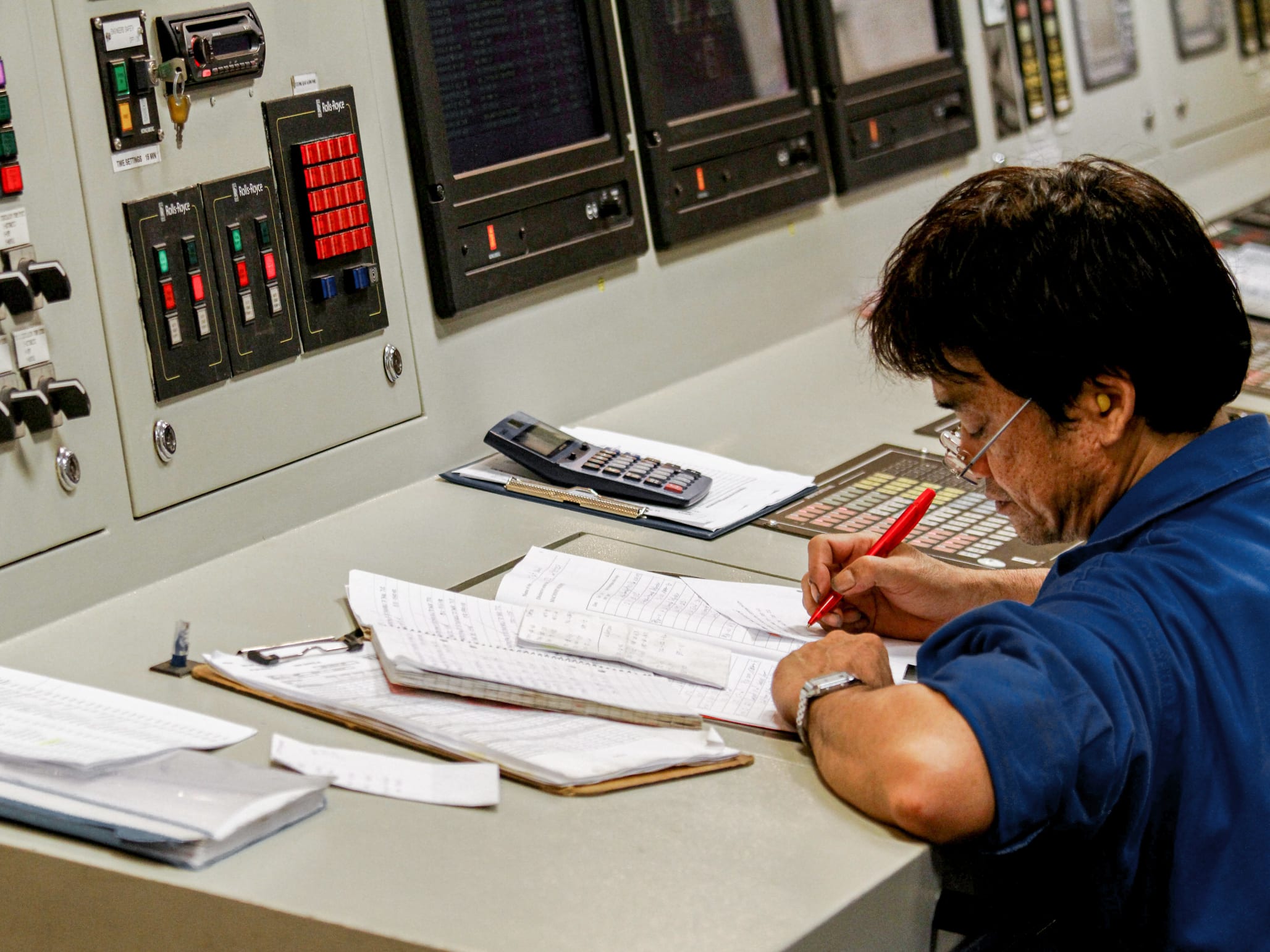
Working in an engine room is connected with a lot of hazards and risks, and it is possible to get injured if not procedures and routines are followed. Photo: Jörgen Språng
5. Engine Room Watchkeeping and Maintenance
Every ship is unique with regards to the engine room layout, but in general, all ships carry more or less the same equipment. Depending on the type of vessel, the different pieces of machinery in an engine room are:
- Main engines.
- Generators and alternators.
- Boilers.
- Compressors.
- Pumps.
- Motors.
- Electrical equipment.
In an engine room, different other equipment may be located, such as:
- Steering gear.
- Refrigeration machinery.
- Hydraulic or pneumatic equipment.
- Two-way portable VHF.
- Lead-acid batteries.
Working in an engine room is connected with a lot of hazards and risks, and it is possible to get injured if not procedures and routines are followed. Many different types of injuries appear in an engine room, unfortunately. A few of the most common types are burns through contact with steam pipes, hot surfaces, welding sparks, etcetera, or slips, trips, or falls on companionways, from open floor plates, protruding parts, or incautious haste.
Head injuries through overhead obstructions or falling objects are also quite common. Since there are always moving and rotating objects in an engine room, some injuries are due to contact with moving parts of machinery such as grinder wheels, flywheels, propeller shaft, etcetera, also quite common. Always keep an extra eye on your collages and yourself to make sure that you are not working or standing too close to a moving object.
And last but not least, make sure to wear some ear protection since the most common injury among machinery staff is hearing loss. This is due to the constant exposure to high decibel noise. Accidents can be prevented by good housekeeping and safe working practices. The use of proper protective equipment is necessary.
Examples of Good Housekeeping:
- Oil and water leaks should be immediately attended.
- Oil spills should be quickly cleaned, and oil-stained lagging replaced.
- Oily rags or cotton waste should be properly disposed of in a closed container and not left lying around to ignite spontaneously.
- Tools should be attended to during work, so that they do not fall from ledges or platforms, and be adequately collected and stowed after work.
- Guards for moving parts of machinery should be in position and good condition.
- Equipment, stores, and parts of opened-up machinery should be lashed and secured against movement.
- All parts of the engine room should be adequately lighted.
- Bilges should be kept clean and dry.
- Bottom platform gratings should never be left open unless the area is fenced and warning signs are posted.
- Access to fire-fighting equipment, escape routes, and emergency exits should not be obstructed by stores or equipment.
Safe Working Practices Should Include:
- Proper locking and tagging of machinery under repair to prevent accidental starting.
- Appropriate checks of equipment used for lifting or other purposes before use
- Proper calibration of test equipment.
- Proper tests of enclosed spaces before entry.
- Use of proper tools for the job and in the appropriate way.
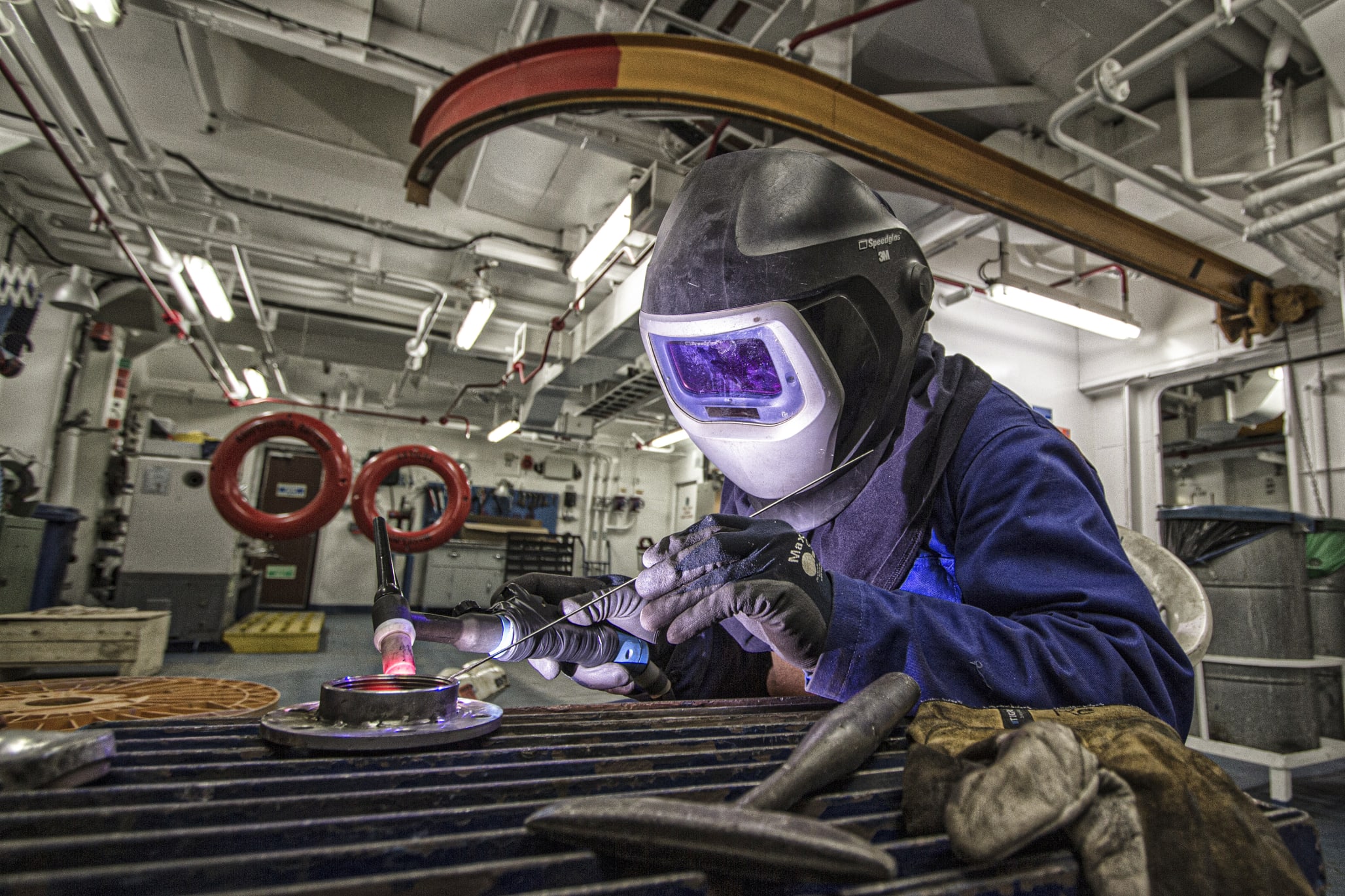
Remember that any hot work always starts and ends with a PTW. Photo: Jörgen Språng
6. Hot Work
The definition of hot work is a work that generates heat or sparks of sufficiently high temperature or intensity to ignite a flammable gas/air mixture. Hot work can be any of the below work:
- Welding.
- Cutting.
- Burning.
- Heating.
- Chipping.
- Use of power tools generating heat.
- Open flame.
- Electric arc.
- Continous sparks.
The hazards connected with hot works are fire, explosion, heat injuries, strong light injuries (ultraviolet light affecting eyes), and shock injury to personnel. Hot works are carried out on more or less all areas onboard. The areas can be divided into four groups. The groups are shown in ascending order of danger.
- Engineer’s workshop.
- Engine room.
- Deck and accommodation.
- Cargo area.
Any hot work always starts and ends with a Permit to Work (PTW). When issuing a PTW for hot work, several questions have to be answered to keep control of the job and to make sure that correct preparations have been made and that all applicable procedures are followed. Depending on where the hot work will be carried out, an atmosphere test can also be appropriate. When all questions have been answered and entered into the PTW, it must be signed by different persons before it is valid. Those persons could be:
- The person who is carrying out the job.
- The area responsible (Chief Officer, Chief Engineer, etc.).
- Officer On Watch (OOW).


